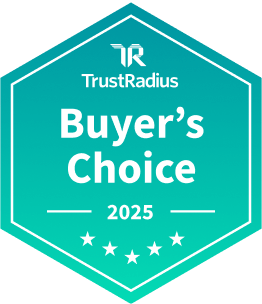How to Invest in Commercial Real Estate
Investing can be complicated, and commercial real estate is a wide industry. Combining the two together can cause headaches, even for more experienced investors. In this article, you’ll learn how to invest in commercial real estate — the details about the fundamentals of commercial real estate, what it’s all about, its different sectors and sub-industries, if it’s worth investing in, how you can invest in it, and what is considered a good return.
Let’s break ground.
What is commercial real estate?
CRE, or commercial real estate, is land and property used for business-related purposes. Storefronts, shopping centers, and workspaces, rather than living space. Properties that are used as a living space are considered residential real estate. However, when buying any property with more than five doors (or five units), like multi-family, for example, it’ll be considered as commercial real estate, even though people live there.
Types of commercial real estate
When you hear the words “commercial real estate” you probably imagine tall reflective buildings made of glass with an antenna at the top, and even some office space full of cubicles where sunlight shines through. When investing your money into CRE as a LP without prior knowledge can at best keep you up at night, and at worst, lose you millions. So, here are the four basic sectors your money will flow into when choosing CRE as an investment vehicle:
Office
Consists of real estate comprising office buildings. Those skyscrapers, urban high-rises, and office parks. Preferred tenants would be law firms, insurance companies, and bank HQs. Lease terms for this sector are often longer, ranging from 5-10 years.
Multifamily
As stated earlier, any residential property offering more than five units (or five doors) is considered CRE – even though people live there. For example: apartment buildings, apartment communities, and townhomes. Size and number of units can vary widely. This type of CRE is a fan-favorite amongst investors due to its more secured cashflow. People will always need a roof to stay under. The more units/doors, the less likely you’ll pay out of pocket for vacancies. Additionally, rents for tenants in this sector are always on the rise, while they tend to stagnate longer in other sectors. Lease agreements in this sector are flexible, especially in terms of duration. Commonly found are six-month and one-year leases, but not longer. Monthly leases exist but are scarce.
Industrial
This sector includes heavy manufacturing, warehouse, assembly, and R&D buildings. Customary tenants will be oil refineries, distribution centers (warehouse), product assembly factories (like cars, or laptops), and big pharma R&D departments. These properties are often located far away from desirable living areas due to noise, pollution, municipal infrastructure, and zoning regulations. Lease agreements in this sector average seven years.
Retail
Retail CRE includes properties that provide spaces required for shops to operate daily and conduct business. Clothing shops, restaurants, and family-owned stores, for example. This sector is usually planned strategically to be located in the vicinity of desired living areas. Good examples will be shopping strips, factory outlets, and shopping malls. Earning potential varies wildly for these properties, depending largely on location, demographics, and quality. Lease lengths in retail average 3-5 years.
Different ways of investing in commercial real estate
If you feel knowing the sectors isn’t enough, we got you covered. While not exactly painting a vivid picture, this section will elaborate on what sub-industries your money flows into when you invest in CRE, helping you choose what marketplace contribution and societal impacts you want to focus on. Multifamily:
- Duplex / Triplex / Quadplex
- Garden apartments
- Mid-rise apartments
- Student housing
- Senior / Assisted Living
Office:
- Central Business District (CBD)
- Commercially zoned homes
- Medical office
- Suburban office buildings
Industrial:
- Bulk warehouse
- Flex warehouse
- Heavy manufacturing
- Light assembly
- Refrigeration / Cold storage
- Showroom
- Storage
Retail:
- Community retail center
- Regional mall
- Strip / Plaza / Shopping center
Online:
- Commercial property real estate ETFs
- Commercial property real estate mutual funds
- Commercial property REITs
- Commercial property real estate company shares
- Commercial property construction company shares
- Commercial property crowdfunding
Now that you have a clearer picture of where your money will be going — and how big and positive of an impact it could have—you still care, and rightfully so, about your bottom line. So, is it worth it?
How do commercial real estate investors make money?
CRE can be complicated and is a very expensive asset class. However, smart investors can discover areas with inherent demand for real estate and purchase properties while supply is still limited. Here are three methods used to increase ROI when investing in CRE:
- Apartment building renovation
An area with a strong economy and a steady population growth can be an opportunity to buy now, and earn later. Renovating an apartment building and increasing its earning potential, via, for example, improving the living spaces of the tenants – therefore increasing the rents, and while doing so—increasing the overall price of the asset.
- Industrial property redevelopment
Finding a distressed area/neighborhood with the potential for economical resurgence in the near future could yield high returns. A longer-term strategy will entail properties that will be rezoned for redevelopment into retail, for example, once demand skyrockets. Then, selling the property leveraging earned appreciation will liquidate your portfolio quickly. Or, you could choose to continue owning it, securing a cashflow pipeline.
- Land entitlement
If you identify land with no current or planned development, but your research dictates it’s ripe for demographic and economic growth in the foreseeable future, you’ll want to acquire it and then obtain all the necessary permits. Obtaining a construction license, for example, doesn’t mean you have to do it yourself. You just made the job much easier for a developer who’ll cut you a fat check for the land, and do the work himself. As a limited partner, that would be the desired and likely outcome.
—
As you can see, alongside portfolio diversification, CRE can provide cashflow from tenants without the volatility of public investment. In your portfolio, it will also extend your ability to leverage debt via the creation of more equity when your assets appreciate over time, as this asset class holds intrinsic value.For the average investor, CRE investing is much more difficult because of its price point. For those who can put their hand on such deals, rewards will be in the form of tax deductions, as they can use the tax code properly to their advantage.
Since real estate is a deteriorating asset, the IRS allows deferring and deducting annual income taxes. The law allows depreciation over 39 years for each property. Depreciation grants you compensation for property fixing when wear and tear occurs, and to hold on to more of your money each year.Another tax benefit helping CRE investors is the 1031 exchange. It’s a tax clause that allows capital gains to be deferred. We mentioned it briefly earlier.
Basically, as you know, capital gains tax is paid on the profit you made when selling an investment. The 1031 exchange lets CRE investors hold off on that capital gains tax bill when selling the property — only if you use the earned sum to purchase another investment property. The window or time frame for this move is: sold within 45 days and bought the second property within 180 days.
Is it worth investing in commercial property?
The ultra-wealthy like putting their money into CRE. Every investment carries with it some kind of risk, and commercial real estate is no different. But generally speaking, real estate returns surpass those of the stock market. While we’re still in the midst of an economical cycle, and the pandemic had markets worry people won’t go back to their offices, today, it’s clear—the office space is recovering. For CRE, it’s common to hear “the 50% rule”, even around the most risk-averse people.
What Is the 50% Rule?
The 50% rule claims real estate investors should anticipate operation expenses to be approximately 50% of a property’s gross income. This does not include any mortgage payments but does include other expenses such as property taxes, insurance, repairs, maintenance, and owner-paid utilities. Note: the 50% rule is just a guideline. This number isn’t set in stone. In reality, the number will fluctuate, but it’s usually a good estimate.
What is a good ROI on commercial real estate?
Internal Rate of Return, or IRR, is actually the most commonly used metrics to value real estate investment opportunities. IRR is the target percent an investor is expected to earn over the life of the investment – if the investment performs as projected, which should be at least 6-8%, and typically target 8-14%. Exceptional deals go to the high tens or even twenties.
Although the IRR is a very important metric, it does not tell the complete story and should be one of many metrics to use when considering a potential real estate investment. IRR, by itself, tells us nothing about actual periodic payments or total profitability, as there’s immense variability in cash flow streams and total profit that will equal a specific IRR.
—
Armed with deeper knowledge on what commercial real estate is about, its sub-industries, the different vehicles used when investing in it, if it’s actually worth it, and what’s considered a good return, you can approach this matter more intentionally, safely, and let others handle it for you while sleeping easier.
*Disclaimer
Investing in commercial real estate can be risky. It is not a fit for everyone. While we aim to provide general information to help you better understand CRE investments, we are neither providing any investment advice nor advising for or against any particular investment.






